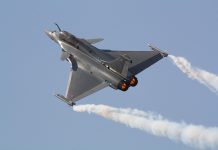
On November 21, 2024, the Russian military tested its new non-nuclear ballistic missile, the “Oreshnik,” targeting the Yuzhmash military plant, a key producer of rocket engines and critical equipment for the Ukrainian military. This test was more than just an assessment of a new weapon; it was a clear indication that Russia is prepared to escalate the conflict with more precise and lethal strikes. The Oreshnik missile is part of Russia’s modernization efforts, aimed at developing advanced weapons that can deliver devastating impacts while minimizing risk to its forces.
Following this test, Western media expressed concerns about the potential for increased hostilities, with speculation about the conflict’s future trajectory. The focus turned to whether Ukraine would retaliate, and how this might affect the war’s progression. Ukraine did not wait long to respond, launching an attack on the Russian city of Taganrog on December 11 using NATO-supplied Atams missiles. These highly accurate missiles targeted vital Russian military sites and strategic locations.
This counterattack placed Ukraine in a perilous position, with Western outlets warning that such actions could lead to further escalation. Military Watch Magazine cautioned that Ukraine might soon face a critical moment. These warnings are backed by reports from Bloomberg, citing high-ranking U.S. officials, which suggest that Russia has identified key Ukrainian military sites to target in the next phase of the conflict. These “fat targets” include crucial infrastructure and military facilities, whose destruction could cripple Ukraine’s military capabilities. Russia is expected to employ newer, more advanced weapons for precise, devastating strikes.
There are also predictions that Russia could launch a large-scale attack against Ukraine between December 16 and 21. Military analysts believe this period could be decisive, with Russia preparing to strike major Ukrainian positions. Such an offensive could result in the destruction of essential military bases and supply depots, significantly impacting Ukraine’s ability to sustain its forces. Reports suggest that Russia may again use the Oreshnik missile, potentially marking the start of a new wave of attacks that would place Ukraine in an even more vulnerable position.
If this scenario unfolds, Ukraine could find itself in an extremely precarious situation, with Russia aiming to deliver a decisive blow to Ukraine’s war efforts. These attacks would not only have severe military consequences but would also pressure Ukraine’s Western allies to provide more advanced defense systems. Observers are closely watching the situation, as the possibility of further attacks, including long-range strategic missile strikes, remains high.
Should Russia proceed with these plans, the consequences could be devastating for Ukraine’s infrastructure and military forces, which are already under significant strain. Despite these challenges, Kyiv remains resolute in continuing its counterattacks, while the international community expresses growing concern over the conflict’s potential escalation.
The situation is entering a more dangerous and unpredictable phase, where each action could lead to significant escalation and new rounds of destructive strikes. Russia’s new Oreshnik missile, which first struck the Ukrainian city of Dnipro on November 21, symbolizes a new level of escalation. Designed for precision strikes against critical infrastructure and military targets, the Oreshnik represents a significant advancement in Russia’s weaponry.
The Oreshnik missile is capable of delivering precise, long-range strikes, far surpassing older models in range and payload delivery. For Russia, this missile is a game-changer, allowing for high-precision strikes deep into enemy territory while minimizing risks to Russian forces. Military analysts see it as a powerful message to the West, showcasing Russia’s growing missile capabilities.
However, for Ukraine, the Oreshnik serves as a stark reminder of Russia’s escalating military strategy. While Russia claims that Oreshnik strikes target military sites, the attack on Dnipro also affected civilian infrastructure, raising concerns about potential civilian casualties. Ukrainian officials have criticized the missile’s use, arguing that even precision weapons can harm civilians when military objectives are not clearly defined.
International reactions to the Oreshnik have been mixed. Western nations have condemned its use, viewing it as part of Russia’s broader strategy to escalate the conflict without direct ground confrontation. There are fears that the Oreshnik could be part of a larger strategy of indiscriminate targeting. Russia, however, insists that the missile is a tool for strategic precision strikes, aiming to weaken Ukraine’s military capabilities while minimizing risks to Russian personnel.
Military analysts suggest that the Oreshnik could significantly impact the course of the conflict. Its long-range, high-precision capabilities provide Russia with a tactical advantage, enabling it to target critical Ukrainian infrastructure far beyond the reach of traditional artillery or aircraft. However, the missile’s use also carries risks, as it could provoke further escalations, potentially drawing in other global powers. Given its potential to strike vital infrastructure, the Oreshnik could lead to harsher retaliatory measures from NATO and other Western allies supporting Ukraine.
Russia’s use of the Oreshnik missile challenges the international community’s efforts to limit its military aggression. This missile may be the beginning of a new wave of highly precise, long-range weapons designed to shift the balance of power in Russia’s favor.





